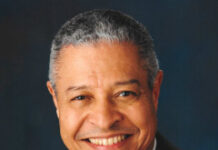 It is no secret that many major American cities still have a high degree of racial segregation in housing. But a new study by researchers at Brown University and Harvard University finds that in most urban areas, people of different races don’t just live in different neighborhoods — they also eat, drink, shop, socialize and travel in different neighborhoods.
It is no secret that many major American cities still have a high degree of racial segregation in housing. But a new study by researchers at Brown University and Harvard University finds that in most urban areas, people of different races don’t just live in different neighborhoods — they also eat, drink, shop, socialize and travel in different neighborhoods.
Researchers geotagged and analyzed locations for more than 133 million tweets by 375,000 Twitter users in the 50 largest U.S. cities. Millions of urban Americans leave behind valuable clues about where they eat lunch, work out, and socialize each time they post a tweet. Using this data, the authors constructed what they called a Segregated Mobility Index.
The results showed that cities with the highest SMIs — in other words, the highest levels of segregated movement — were those with large populations of Black residences and troubled legacies of racial conflict, including Cleveland, Philadelphia, and Atlanta. Detroit had the highest score. By contrast, the cities with the lowest scores tended to have proportionally smaller Black and Hispanic populations and proportionally larger White populations: Denver, Minneapolis, Seattle. Portland had the lowest score. The Segregated Mobility Indexes of the largest, most racially diverse American cities, including New York, Los Angeles, and Chicago, fell somewhere in the middle.
Jennifer Candipan, an assistant professor of sociology at Brown University and lead author of the study, explains that “some cities have long histories of preventing people of color from living in majority-white neighborhoods through racist housing policies and racial restrictive covenants. It makes sense that we see that segregation borne out in people’s movement as well. If you live in a city with segregated neighborhoods, you’re more likely to move in segregated social circles and spend time in neighborhoods full of people who look like you, and avoid places where you’ve been excluded.”
The authors state that providing more affordable housing options would go a long way toward diversifying neighborhoods and movement. They also suggest that increasing public transportation options could help. In some cities, people of color live on the margins of the city limits, miles away from affluent neighborhoods and the city center — and without good transit options, they can be cut off from job opportunities and cultural experiences in those areas.
“It’s time for us to recognize the extent of that segregation and to try to fix it — because at the very least, everyone should be able to go where they want, when they want,” Dr. Candipan said.
The full study, “From Residence to Movement: The Nature of Racial Segregation in Everyday Urban Mobility,” was published on the website of the journal Urban Studies. it may be accessed here.












This redundant study by Jennifer Candipan is not new and definitely not “ground breaking” by any measurable metric. Anyone with an inkling of intelligence can clearly see that most Whites, Asians, Latinos, and even African/Caribbean immigrants Do not want to live near so-called African Americans regardless of their SES. The fact remains, WHITE AMERICANS specifically, despise the sheer thought of living next to so-called Black Americans historically or in a current context.The restrictive housing Racial Covenants are still alive and well today and simply changed its phraseology. This is America. Hey Jennifer Candipan, I wonder what type of residential area you live. Talk about hypocrisy.
agreed, stop with Bull